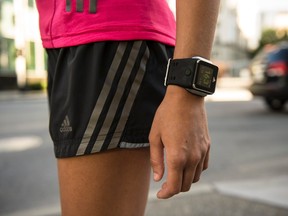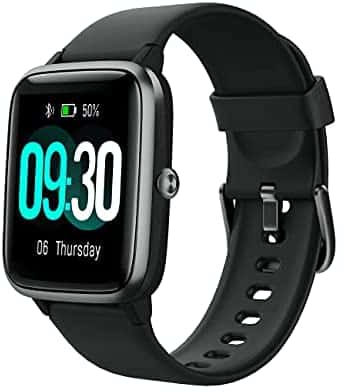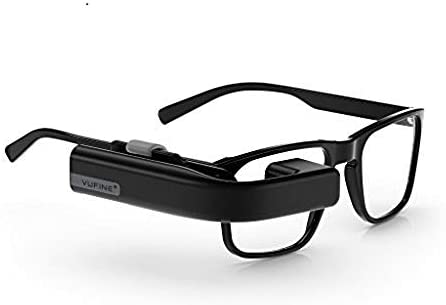Smart watches now feature real-time monitoring of health metrics like sleep, heart and respiratory rate, blood oxygen levels, and ECGs.

Most people generously round up when it comes to declaring how much they exercise. Among friends a little white lie is no big deal, but the consequences of overestimating physical activity are more significant when it comes to individuals involved in research studies.
The flaws in self-reporting are well-known among researchers, but it was the introduction of wearable devices like smart watches that started exercise scientists questioning some of the traditional exercise guidelines that are based on studies allowing individuals to self-declare how much they exercise per week.
Advertisement 2
THIS CONTENT IS RESERVED FOR SUBSCRIBERS ONLY
Subscribe now to read the latest news in your city and across Canada.
- Unlimited online access to articles from across Canada with one account.
- Get exclusive access to the Montreal Gazette ePaper, an electronic replica of the print edition that you can share, download and comment on.
- Enjoy insights and behind-the-scenes analysis from our award-winning journalists.
- Support local journalists and the next generation of journalists.
- Daily puzzles including the New York Times Crossword.
SUBSCRIBE TO UNLOCK MORE ARTICLES
Subscribe now to read the latest news in your city and across Canada.
- Unlimited online access to articles from across Canada with one account.
- Get exclusive access to the Montreal Gazette ePaper, an electronic replica of the print edition that you can share, download and comment on.
- Enjoy insights and behind-the-scenes analysis from our award-winning journalists.
- Support local journalists and the next generation of journalists.
- Daily puzzles including the New York Times Crossword.
REGISTER TO UNLOCK MORE ARTICLES
Create an account or sign in to continue with your reading experience.
- Access articles from across Canada with one account.
- Share your thoughts and join the conversation in the comments.
- Enjoy additional articles per month.
- Get email updates from your favourite authors.
Article content
Wearable technology offers a more objective view of daily physical activity by working in the background to stealthy track daily movement. As more data from devices like Apple, Fitbit, Garmin and Polar smart watches becomes available, researchers are discovering just how big a gap there is between how much people say they exercise and how much they really exercise. So big is the gap that it has become apparent that the health benefits accrued from current physical activity guidelines can be achieved in less time than previously reported.
“Current physical activity guidelines largely reflect the dose-response relationship between perceived — rather than actual — levels of physical activity and health outcomes, and the amount of device-measured physical activity needed for health benefits appears to be smaller than previously thought,” said a recent editorial in the British Journal of Sports Medicine.
Instead of the recommended minimum of 150 minutes of physical activity per week, data obtained from wearable devices suggest that anywhere from 40 to 60 minutes of moderate to vigorous intensity exercise can reduce the risk of chronic disease.
Get the latest headlines, breaking news and columns.
By clicking on the sign up button you consent to receive the above newsletter from Postmedia Network Inc. You may unsubscribe any time by clicking on the unsubscribe link at the bottom of our emails or any newsletter. Postmedia Network Inc. | 365 Bloor Street East, Toronto, Ontario, M4W 3L4 | 416-383-2300
Article content
Advertisement 3
That’s not all. The ability for wearable devices to capture the intensity of physical activity provides even more insight into how vigorous exercise can affect health. As little as three to four minutes a day of high-intensity exercise can reduce the risk of chronic disease by 30 to 40 per cent, even among those who are otherwise sedentary. That’s huge return for small bouts of physical activity, especially if that’s all you can find time to do.
The beauty of wearable devices is that they are worn pretty much 24/7, 360 days of the year, which makes the data collected unprecedented. The “always on” feature provides a true picture of physical activity patterns, including capturing small but potentially significant bouts of activity that may or may not have been counted through self-reporting.
So while it’s not unusual for researchers to use accelerometers, similar to those found in smart watches, to track the daily activity of subjects, most study protocols are limited to one week with the data extrapolated to reflect long-term trends.
Wearables like smart watches, however, track activity over the course of the full year, which helps provide a real look at exercise adherence as well as gaining a better understanding of how exercise habits vary during weekends, holidays and with changing weather patterns.
Advertisement 4
Article content
Despite the upside of the quantity and quality of data collected by wearable devices, there are challenges. Not everyone is comfortable with sharing their personal information. And while most research-grade accelerometers use similar algorithms to measure physical activity, commercial devices don’t share how they quantify movement, which undermines the universality of the data collected.
Then there’s the high cost of wearables, which means the majority of data collected is from an affluent demographic. North Americans dominate the market share, accounting for 33.8 per cent of the wearable market in 2022, with Asia Pacific and Europe not far behind. But like cellphones, the price point of wearables will eventually drop, making them more accessible to middle- and low-income populations around the world. Once this happens, the reams of data collected by consumer wearables will be more representative of physical activity trends on a global scale.
But that’s not the only way wearables will develop over time. Smart watches have already started adding real-time monitoring of personal health metrics like sleep, heart and respiratory rate, blood oxygen levels, ECGs and walking speed and steadiness. And it won’t be long before more health features like glucose and blood pressure monitoring are not just available but will include the ability for physicians to view the data in real time. The inventory of devices that track physical activity and health will also expand, offering consumers more wearable options like clothing, rings, ear buds and glasses.
Wearables have come a long way since the first wrist-worn Fitbit that tracked little more than daily steps and the introductory Apple Watch that urged you to “close your rings.” Today’s devices track your swim workout down to the stroke and lap, monitor your sleep patterns, heart rate and body temperature, allow you to set daily physical activity goals, provide actionable health information that can be used by a physician to assess cardiovascular health and reach out to emergency services should you fall and need assistance.
Who knows what’s next and what kind of information can tracked and shared by devices that for centuries simply let you know the time.
Advertisement 5



